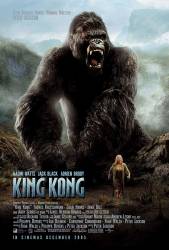Factual error: Denham is obviously shooting a sound film - he has a sound recordist with him along with the bulky and awkward recording equipment typical for the era, and they discuss the problems of recording dialogue on board. But not once do we see him filming with sound. We see the crew recording dialogue - synchronised sound, recorded on location, which is utterly impossible given the equipment they have and the circumstances under which the fim is being shot. We never see a microphone, a boom pole or a tape recorder. His camera isn't even 'blimped' - soundproofed - and it's handcranked, which makes a racket. They can't be planning on adding the sound later - why have the sound recordist and his bulky and heavy equipment there with them if they are? We see the crew recording dialogue - synchronised sound, recorded on location, which is utterly impossible given the equipment they have and the circumstances under which the fim is being shot. The whole point of post dubbing dialogue is that you don't need a sound recordist in the first place.
Factual error: In the scene where Denham is getting a wide-shot of the valley where they first spot the dinosaurs, Denham's assistant is using a light meter in a brown leather case. This light meter is unmistakably the 'Weston Master Universal model 715/S74'. This model was first produced in 1939. Since the film takes place in 1933-34, this model of light meter would not have existed. (01:21:35)
Factual error: In at least one shot as Kong is on top of the Empire State building, the sunrise over Long Island is wrong. Three planes attack from the southwest and we see the sun rise in the east as Newtown Creek (Nassau River) glistens across the East River. The mouth of this river opens southward but in this shot everything is inverted with the mouth of the river pointing northward. Also, looking eastward, Roosevelt Island should be on the left of Newtown Creek, not on the right.
Factual error: The drop fare on the taxi is shown as 25 cents. However, this fare was not charged until 1952, when the former taxi fare of 20c 1st 1/4 of a mile and 5c each additional 1/4 of a mile (which went into effect in 1934) was increased to 25c the 1st 1/5 of a mile and 5c each additional 1/5.
Factual error: In the scene where Kong is running around the streets of New York City and being chased by two military vehicles, the lead open-topped sedan has an air-cooled 30 caliber machine gun mounted on a bar behind the driver, with the gunner in the back seat. The time setting of the movie is 1933-1934. Air-cooled ground mounted machine guns were not in general use until 1942, and were not available for aircraft until 1936. The Army used water-cooled machine guns until the start of World War II.
Factual error: In the scene where Kong is running around New York City and is being chased by the Army, the first military open-topped sedan (which has a machine gun mounted in the rear seat) has a 1934 NY license plate on the front of the car. Military vehicles do not have civilian license plates, not even as a decoration.
Factual error: In the scene in which Kong is running loose on the streets of New York city, and being chased by two military Army vehicles, the vehicle identification number, starting "USA and followed by six or seven numbers" is visible on the hood of the vehicles. The first two numbers in a USA number is the year of manufacture of the vehicle. Thus, the truck with the 3 inch cannon was manufactured in 1945 because the number starts "USA45." The time setting of the movie is 1933-1934.
Factual error: There is no lift in the Empire State Building running between 1st and 100th, as shown on the dial in the lift.
Factual error: When Denham sees the smashed camera he sees the film stock spilled on the ground. It is brown, indicating unexposed colour stock. Brown emulsion film didn't exist in those days - it was introduced by Kodak in 1943. In those days it would have been black and white emulsion, blue on one side, and grey on the other. Colour films in the early 30s were made by painting black and white films frame by frame or printing the monochrome negative three times and staining each one a different primary colour.
Factual error: Naomi Watts is recruited for a role partially because she is a "size 4". In the 1930s there was no such thing as a "size 4". The standardization of women's sizes in the US (i.e. Assigning even numbers to a set of bust, waist, hip measurements) did not occur until World War II (1941 to be exact). See http://museum.nist.gov/exhibits/apparel/index.htm.






Answer: They scared them off with their guns. In the scene where they capture Ann to sacrifice her to Kong, Denham and his men come to rescue her and when they start shooting the natives hide. It's never fully explained but the most likely answer is that they are too scared and have even moved villages or are just hiding really well.